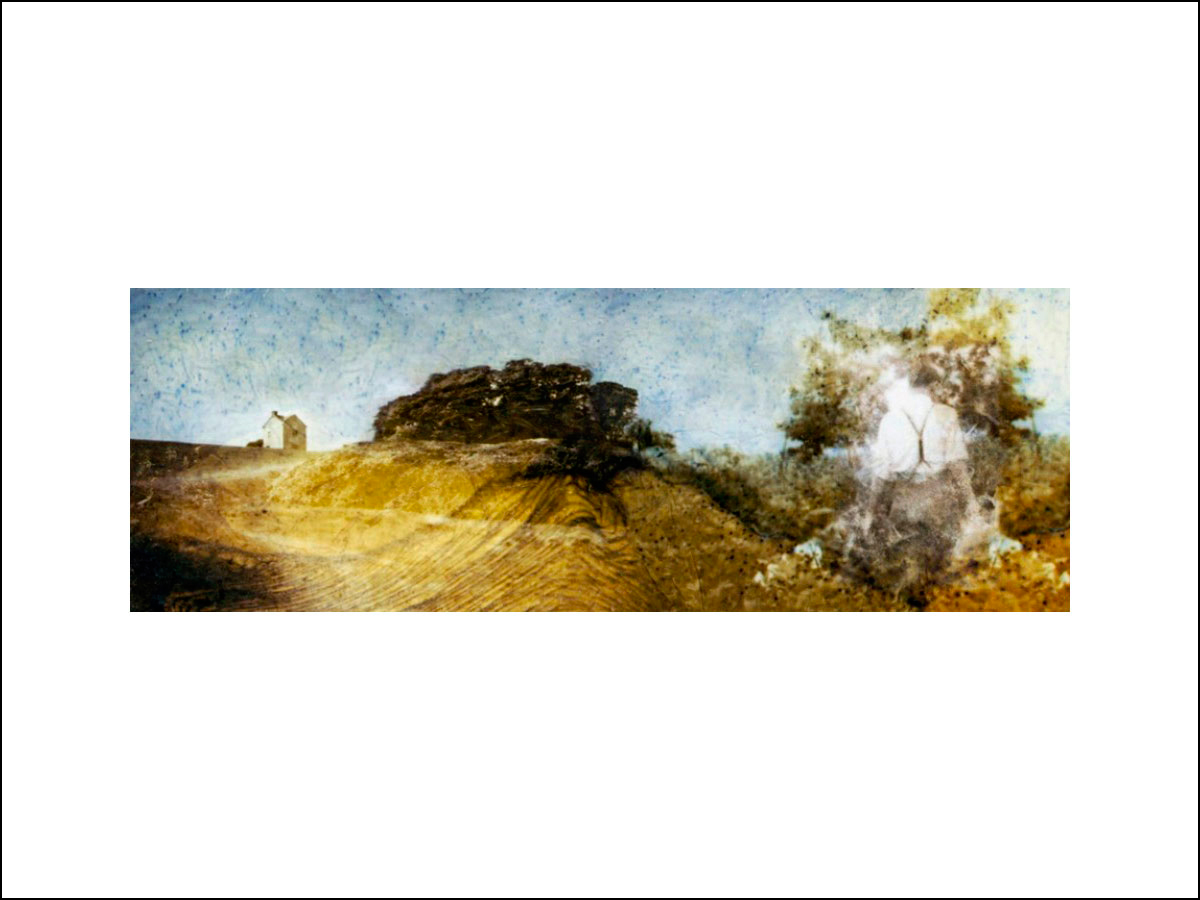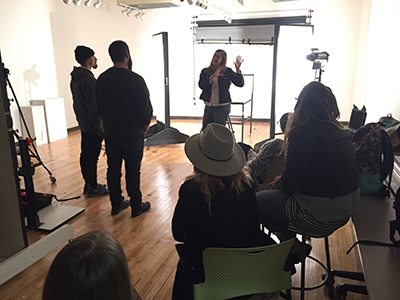Selected Memories: Leah Gose is a Photographer You Should Know

 College professors are an interesting lot, especially those in art. During my undergrad years, I’m not sure I was mature enough to distinguish academic nurturing from unhelpful critiques. So these last several years of being partnered to a professor, which consequently means many of my friends now have that title, were enlightening.I’ve learned to seek out those whom I want and trust to teach me – turns out many fit this bill. (Yes, this is another takeaway).But there is one professor who inspired and gave me the courage to work toward an MFA and that photographer is Leah Gose. With her work in museums, themes of family memory, and similar interests we immediately connected. While at Radford University, though she never was my professor, she was an incredible cheerleader for other photographers. Somehow for me she stilled my competitive edge and showed me the value of being a true advocate for the photographic arts.My one regret with the MFA program is that I didn’t do it sooner and take advantage of the opportunity to work with her. Those who are at Kendall College of Art and Design of Ferris State University in Grand Rapids, Michigan, are very lucky to have her as a professor.Currently she has work in TPS 25 at the Museum of the Big Bend, Alpine, Texas. This exhibit celebrates the 25th anniversary of the Texas Photographic Society and runs from June 3 - Sept. 5, 2016.And now you get to meet her (if you are not already acquainted).[gallery type="slideshow" size="full" ids="215,216,217,218,219,221,222"]© 2016. Leah Gose
College professors are an interesting lot, especially those in art. During my undergrad years, I’m not sure I was mature enough to distinguish academic nurturing from unhelpful critiques. So these last several years of being partnered to a professor, which consequently means many of my friends now have that title, were enlightening.I’ve learned to seek out those whom I want and trust to teach me – turns out many fit this bill. (Yes, this is another takeaway).But there is one professor who inspired and gave me the courage to work toward an MFA and that photographer is Leah Gose. With her work in museums, themes of family memory, and similar interests we immediately connected. While at Radford University, though she never was my professor, she was an incredible cheerleader for other photographers. Somehow for me she stilled my competitive edge and showed me the value of being a true advocate for the photographic arts.My one regret with the MFA program is that I didn’t do it sooner and take advantage of the opportunity to work with her. Those who are at Kendall College of Art and Design of Ferris State University in Grand Rapids, Michigan, are very lucky to have her as a professor.Currently she has work in TPS 25 at the Museum of the Big Bend, Alpine, Texas. This exhibit celebrates the 25th anniversary of the Texas Photographic Society and runs from June 3 - Sept. 5, 2016.And now you get to meet her (if you are not already acquainted).[gallery type="slideshow" size="full" ids="215,216,217,218,219,221,222"]© 2016. Leah Gose
Leah’s words:
1. What direction is your current personal work taking and please describe your work?A. I am currently working on two bodies of work – one large-scale and the other small-scale. My current work continues to explore memory but with a focus on the act of remembering itself. The Uncommon Place of What is Left Behind investigates the mental and physical reconstruction of neglected domestic and urban interior spaces in order to ignite a sense of recognition and memory recall. These interiors become metaphors of spaces in the mind and serve as a location that houses a memory. The images are printed and torn up and rephotographed. The repetition of tearing in each image serves as a reminder of that moment-by-moment struggle and process to recall a memory. By transforming the original spaces back and forth between 3D and 2D, I have created puzzles that cannot be solved. The images in this series will never be reconstructed into a clear flat document of the original space. These images are large-scale 40x40 pigment prints.Questions of Stella is a body of work that I just started a few months ago that is a series of small scale collages that incorporate poloroids that I have shot and postcards that my great-grandmother collected. Her postcards and my photographs come together to recontextetualize memories of what remain both physically and metaphorically. I am left with questions rather than answers – generalizations rather than specifics. Theses dreamscapes are rooted in the details presented… sometimes revealing and yet often concealing.At a recent portfolio review, the reviewer said of my work “I find it interesting that you have to tear something up and rebuild it to make it your own.” I have never been satisfied with just a photograph and do consider myself a process-oriented artist that is infatuated with creating physical and psychological layers.2. Before dedicating yourself full time to photography you worked in the museum world, how has this influenced your work?A. History was my first passion in life and still is. Much of my free time is spent reading history books. I am very lucky in that both sides of my family have been very good at keeping family records. I feel a personal connection to history through my family’s story. Those physical records, personal object and photographs have found their way to me and I am now the keeper of my family history. So it was only natural that my work should reflect my love of history but more specifically the connections I have with those people that came before me and how their memories and stories have influenced me.3. Your academic career has taken you to seemingly different college environments from Memphis to rural Southwest Virginia to Michigan. How have the college cultures differed from each other?A. In many ways they are very similar but at the same time very different. The biggest difference is in the regional differences. I am reminded of how vast this country is and that in someway entering a new region is not that unlike traveling to another country. Yes we all speak the same language but each location has developed certain sayings and certain ways that things are done. Each place had its own rhythm. The biggest difference was not in teaching or in the academics but more with the day to day of life. How people live their lives. These areas have all had very different political, religious and socioeconomic differences. Those differences have influenced me in regard to a broader worldview and understanding the human condition.4. What challenges do you face in keeping a balance in creating your own work to guiding others in making their own images?A. Like all art faculty it’s a matter of balance and time management. For me staying current in my art practice feeds directly into my teaching practice. I also know how I function as an artist; what I need to make work in regard to space and time. Most artists will tell you that they can’t function without making art. I am one of those artists though not the kind that doesn’t sleep and obsesses. I have learned how to balance life a lot better the older I have gotten. I know I also can’t function just making art and teaching. My other hobbies are important to keeping me “sane.” Having a full life feeds directly into my successful art and teaching practices. I’m very committed to incorporating time management skills into all of my classes and helping students find out who they are as artists.5. What is your advice for any newly minted MFA student who wants to pursue a teaching path?A. Do everything you can while in grad school. By that I mean have experience running/managing the photography facilities, including managing student workers; teach every available level of photography classes you can; get as much teaching experience at other schools once you can teach (most schools will let you adjunct after you have 18 MFA credits); enter as many exhibitions as you can and build your exhibitions for your resume; have experience not only in fine art photography but commercial as well; become an SPE member and attend the conferences, network, network! Be prepared to adjunct for a few years after you graduate. Apply for every full time photography teaching job and be prepared to move to a location that might be less than desirable for your first full time position. Get experience and then put your application back out there after a few years.6. Describe the most fulfilling and satisfying image you have ever created.A. That would have to be am image from my MFA series titled Blackberry House. During my undergrad and most of my graduate school I suffered from lack of self-confidence. I felt all over the place while my fellow students seemed to be very cohesive in regard to their work. Blackberry House was the image that gave me that confidence that I was missing. Everything came together for me with that image. Everything that I had been exploring and testing during grad school finally came together in that image.

